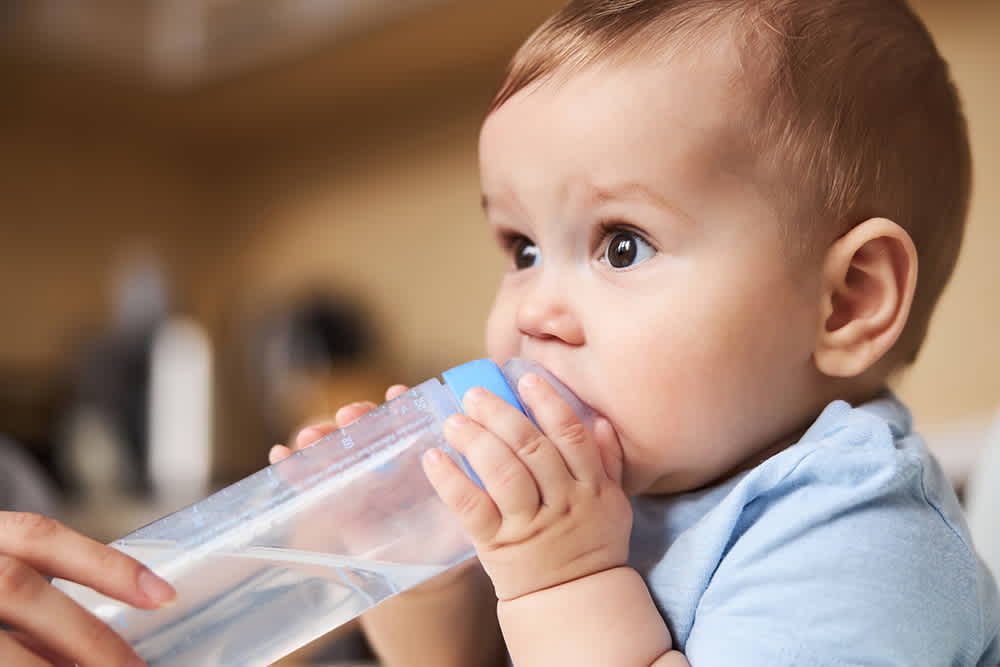Is Camel Milk the Next Big Thing in Baby Nutrition?
“There is no love like that of the parent for the child”.
We have come a long way from hunting with spears to scrolling through AI playlists in milliseconds, and yet, this saying still stands true. With the birth of the child, a parent is born, and nothing in the world can replace the care of a parent for their child.
Parents always want the best for their child, specifically when they are infants. These are the developmental years, and nutrition is of utmost importance during this time. Although breast milk is still the gold standard for baby nutrition, parents' quests to provide the best for their child are never-ending.

After the exclusive breastfeeding phase is over, parents often introduce different foods to their babies. What if a superfood is introduced in their diet that checks all the boxes for their nutritional needs? Sounds wild, but you may have missed out on something real.
Hidden Nomadic Gem
The changeover from exclusive breastfeeding to the introduction of new food items in the babies’ menu is often not easy. There will be sleepless nights, endless crying, and many more when the baby is hungry and is not getting enough nutrition. So, what can be the solution?
Mommy milk is often substituted by milk from the dairy, right? But what if a superfood dairy alternative that has way more benefits than normal dairy were introduced to them?
This is a sacred nomadic superfood from the deserts that has surprising benefits on the growth of babies.It is given to the young ones traditionally in many cultures to fill the nutritional gaps in their diet.
It is the CAMEL MILK.
That’s right, camel milk for babies is extremely beneficial and its emergence is creating a modern parenting buzz recently.
Why Camel milk for babies?
While choosing any food for the babies, parents have a few questions in mind-
- Is it nutritious?
- Is it natural?
- Will my baby like it?
- Will my baby be sensitive towards it?
- It is rich in vitamins and minerals that are required for optimal health.
- It is rich in calcium and phosphorus. The role of calcium in the growth and development of bones is a known fact.
- As a source of Vitamin C, this helps in iron absorption in the body, thus anemia can be said bye-bye.
- The presence of healthy fats may be a great aid in the development of the brain.

| Age | How much to give? | Ways to add |
| 6 months - 1 year | 20-30 mL | Spare their soft gums and add it to baby food or directly in liquid form |
| 1-3 years | 50 mL | Now they have teeth, so add it to porridge, flavoured milk, or popsicles |
| 5 years and above | 200 mL | In any form they like, in shakes, pancakes, desserts, and sauces |
Important Note- For the parents
Final Thoughts
Frequently Asked Questions
Is camel milk better than cow milk for toddlers?
Is camel milk safe for my baby?
How is camel milk different from cow milk?
Camel milk has a slightly saltier taste than cow milk. There is a difference in the nutrient profile of both milks as well.
Does camel milk support the immunity of babies?
Camel milk is rich in immunoglobulins, and this helps in the building of resilience in babies.
How to prepare camel milk for infants?
For babies under 12 months, camel milk should not replace breast milk or infant formula, as these provide essential nutrients for early growth. If your child is over one year old and your pediatrician approves introducing camel milk, make sure it is pasteurized before use. Warm it gently (avoid boiling for long periods), and serve plain without adding sugar or flavoring. Start with small amounts to check tolerance, and always keep your doctor informed about any changes in your child’s diet.
At what age can babies drink camel milk?
Camel milk is not a substitute for breast milk or infant formula in babies under one year old. For toddlers and older children, it can be introduced in small amounts after consulting a pediatrician, especially if your child has specific dietary needs or sensitivities. Every baby is different, so it’s best to get personalized guidance from your healthcare provider before making the switch.


